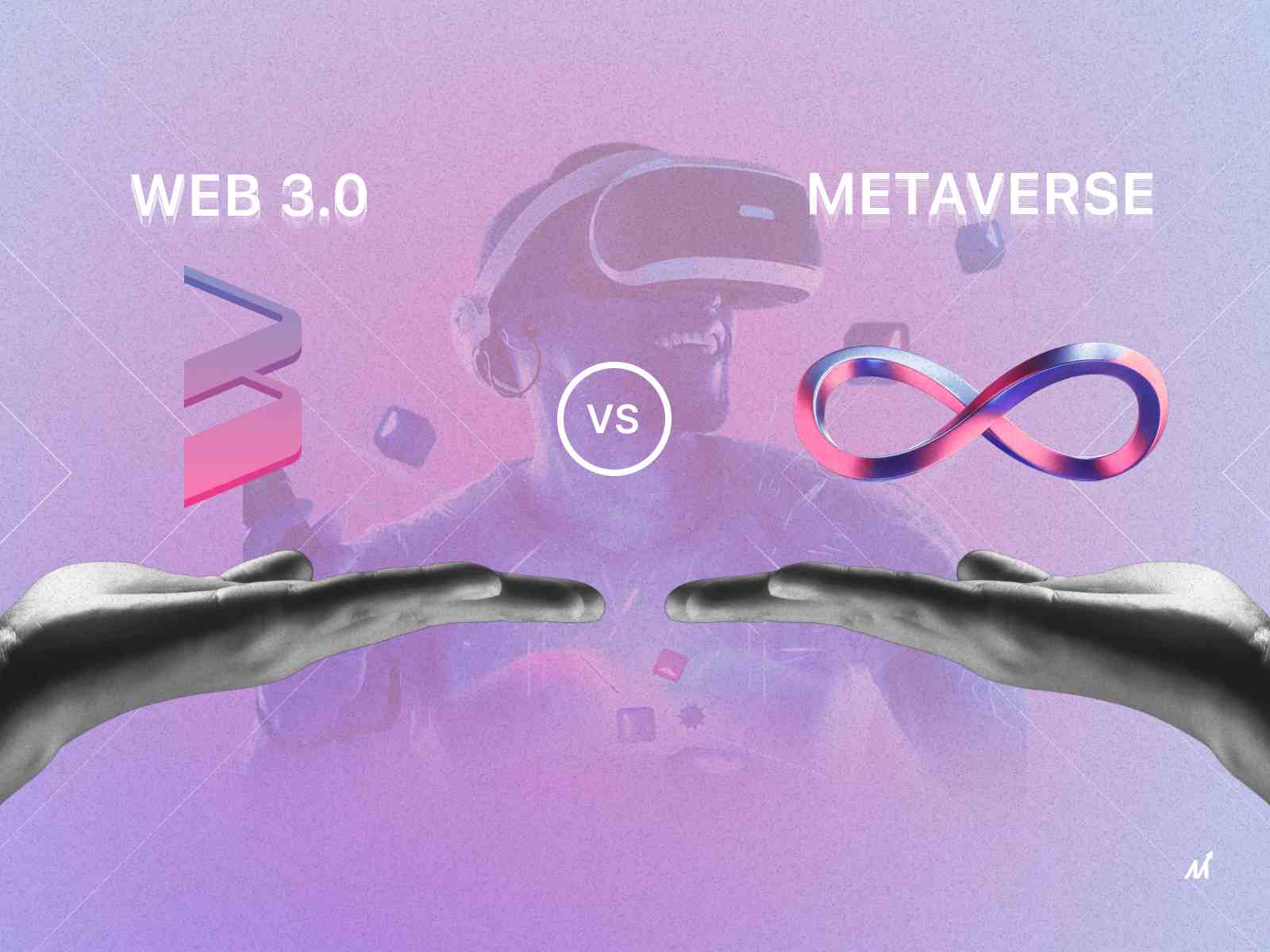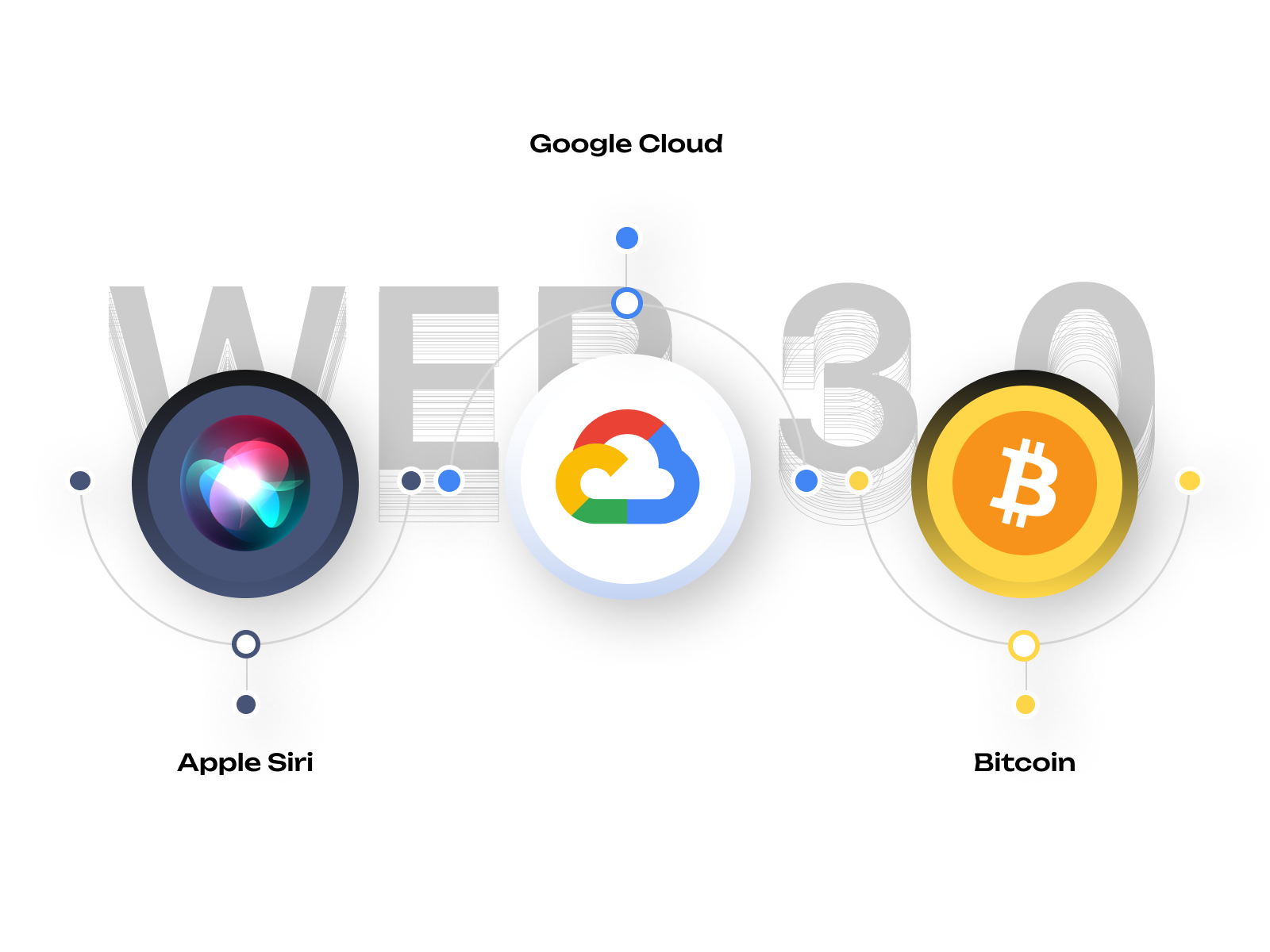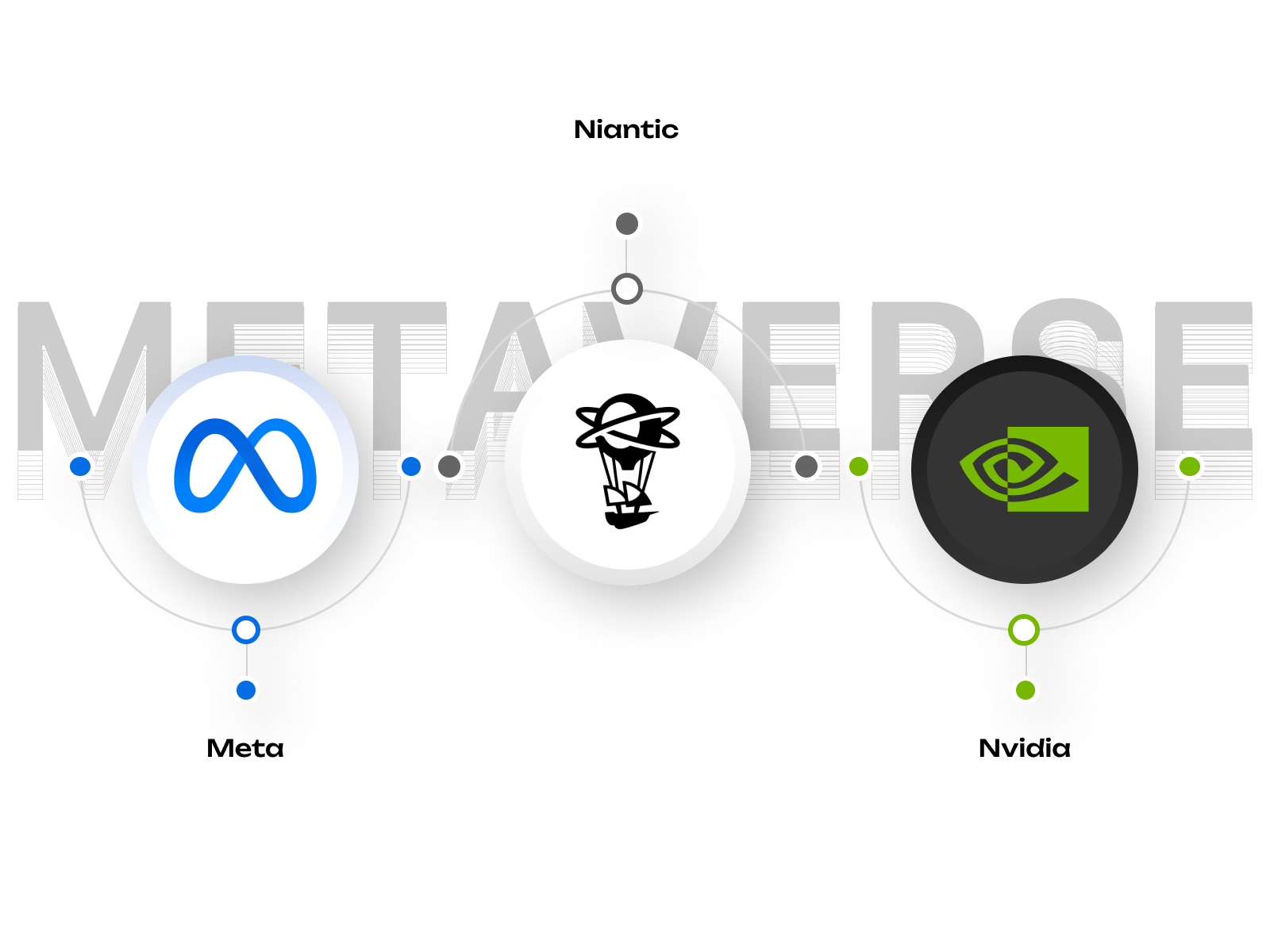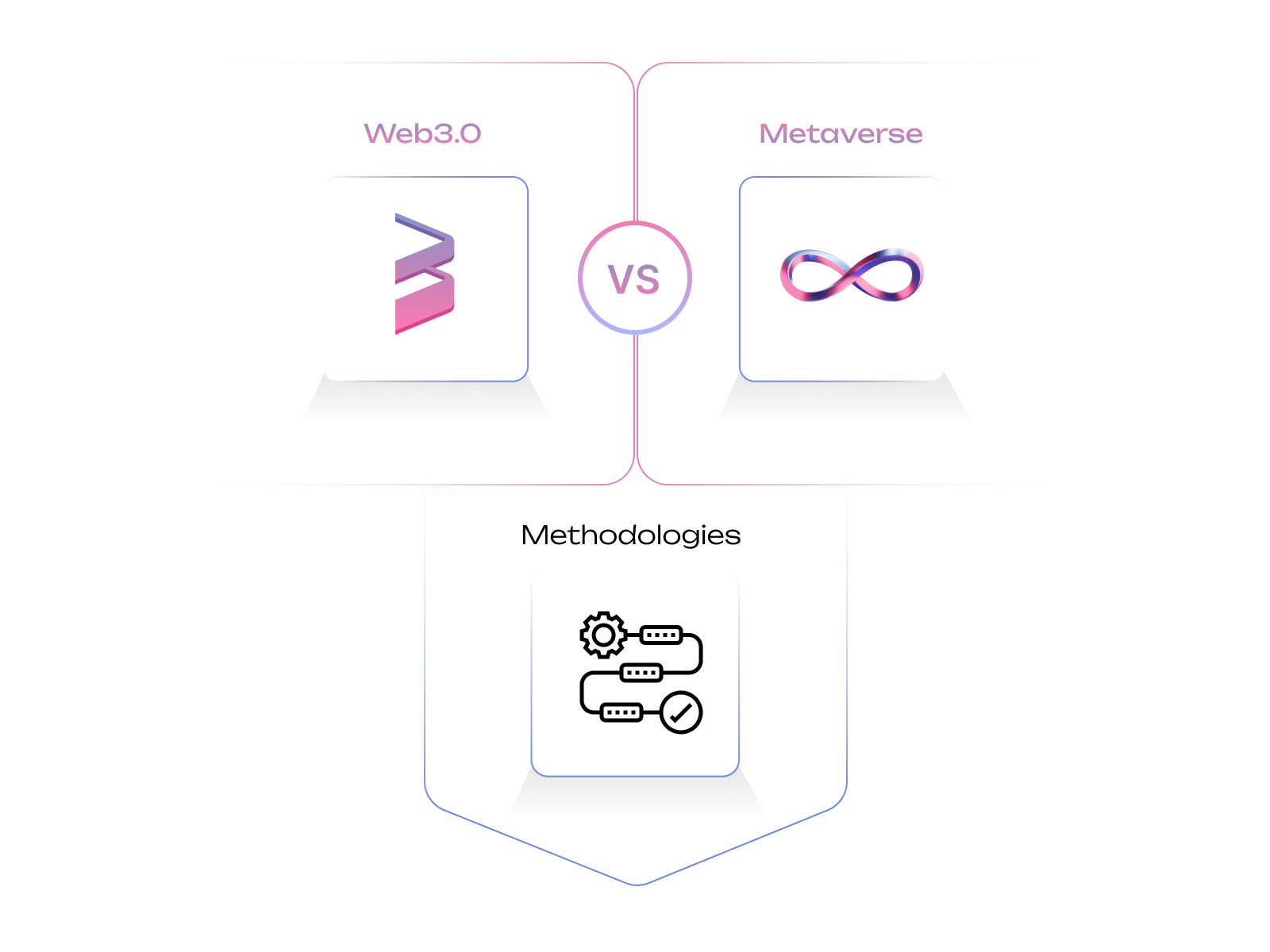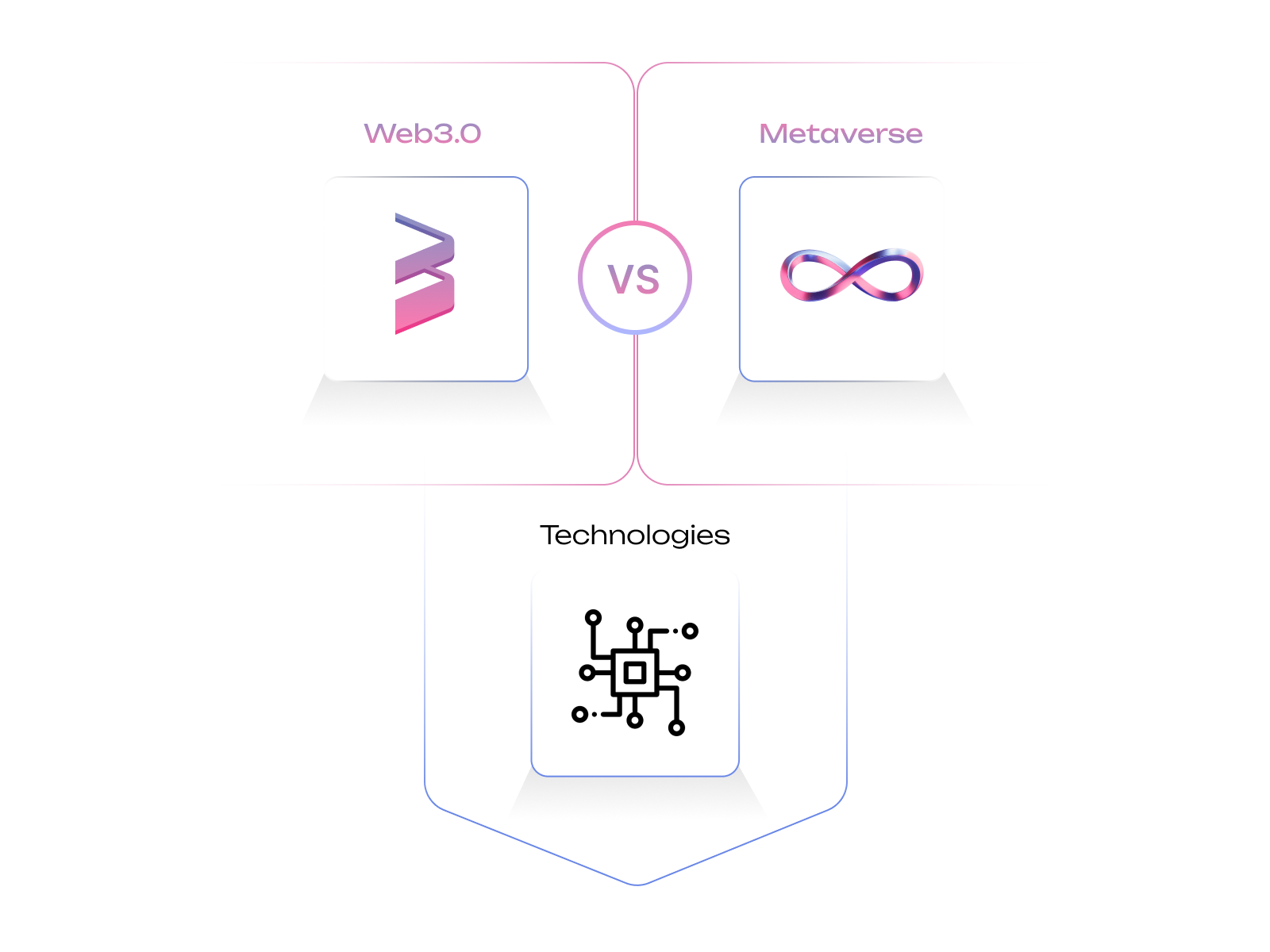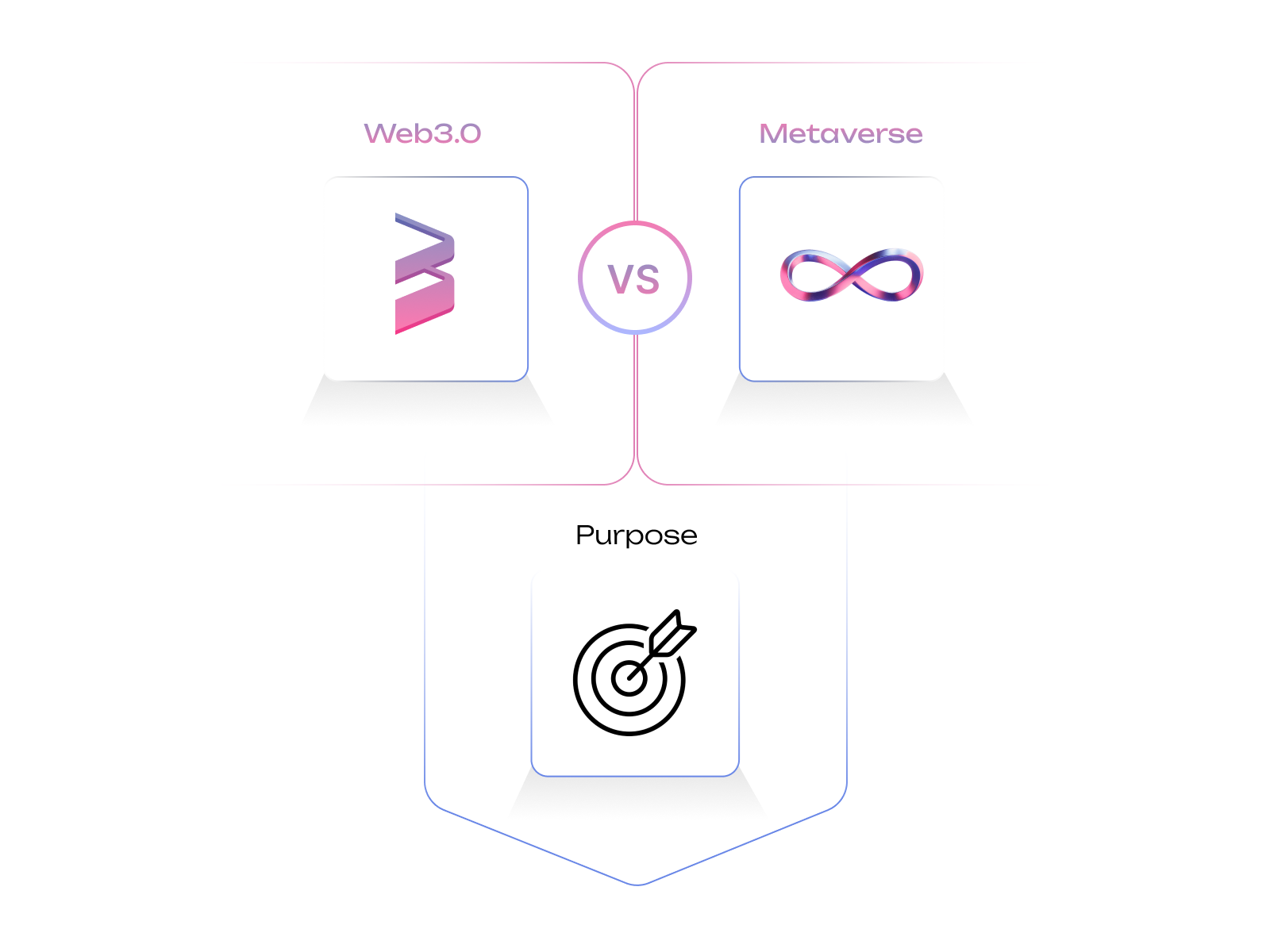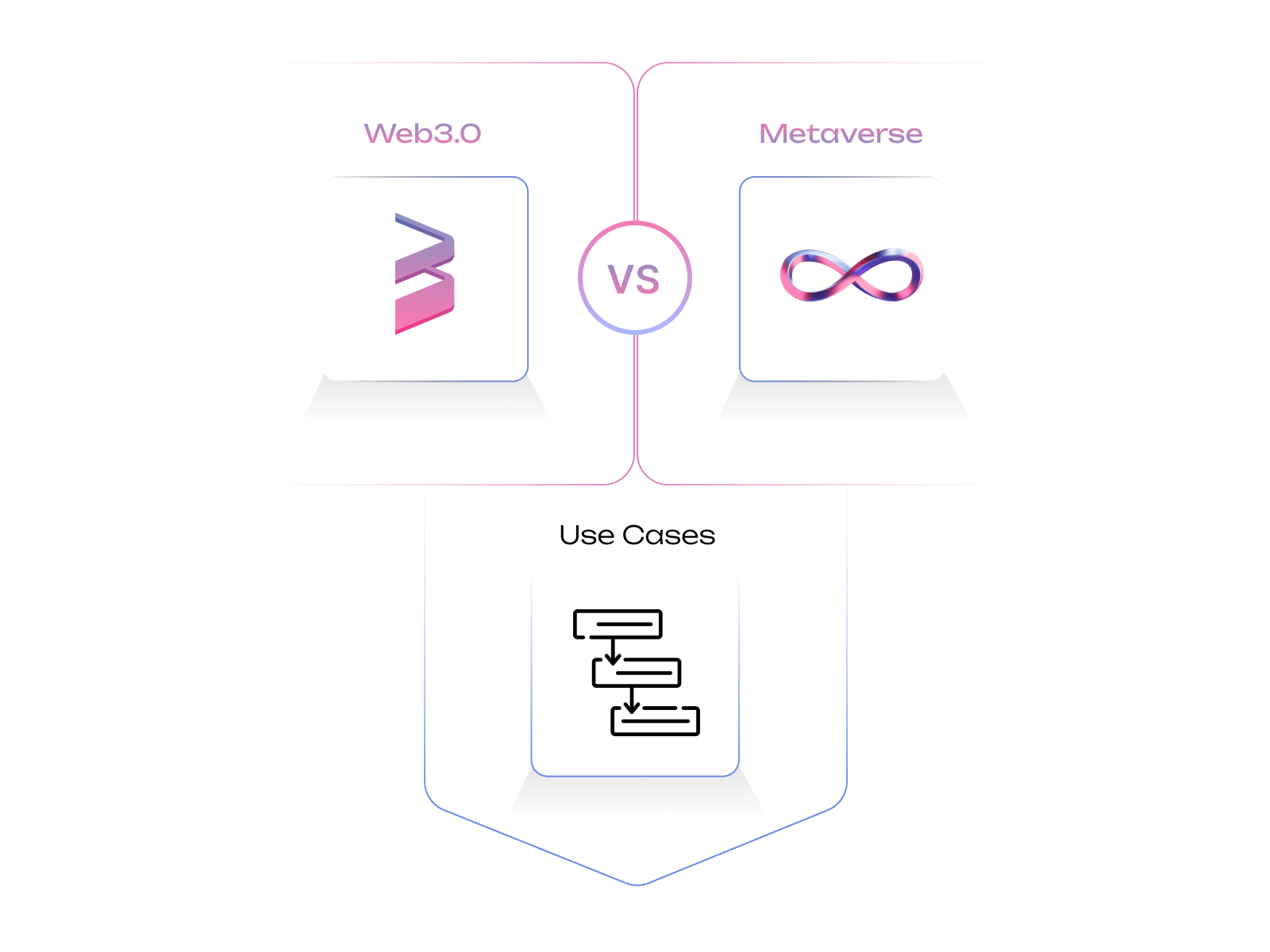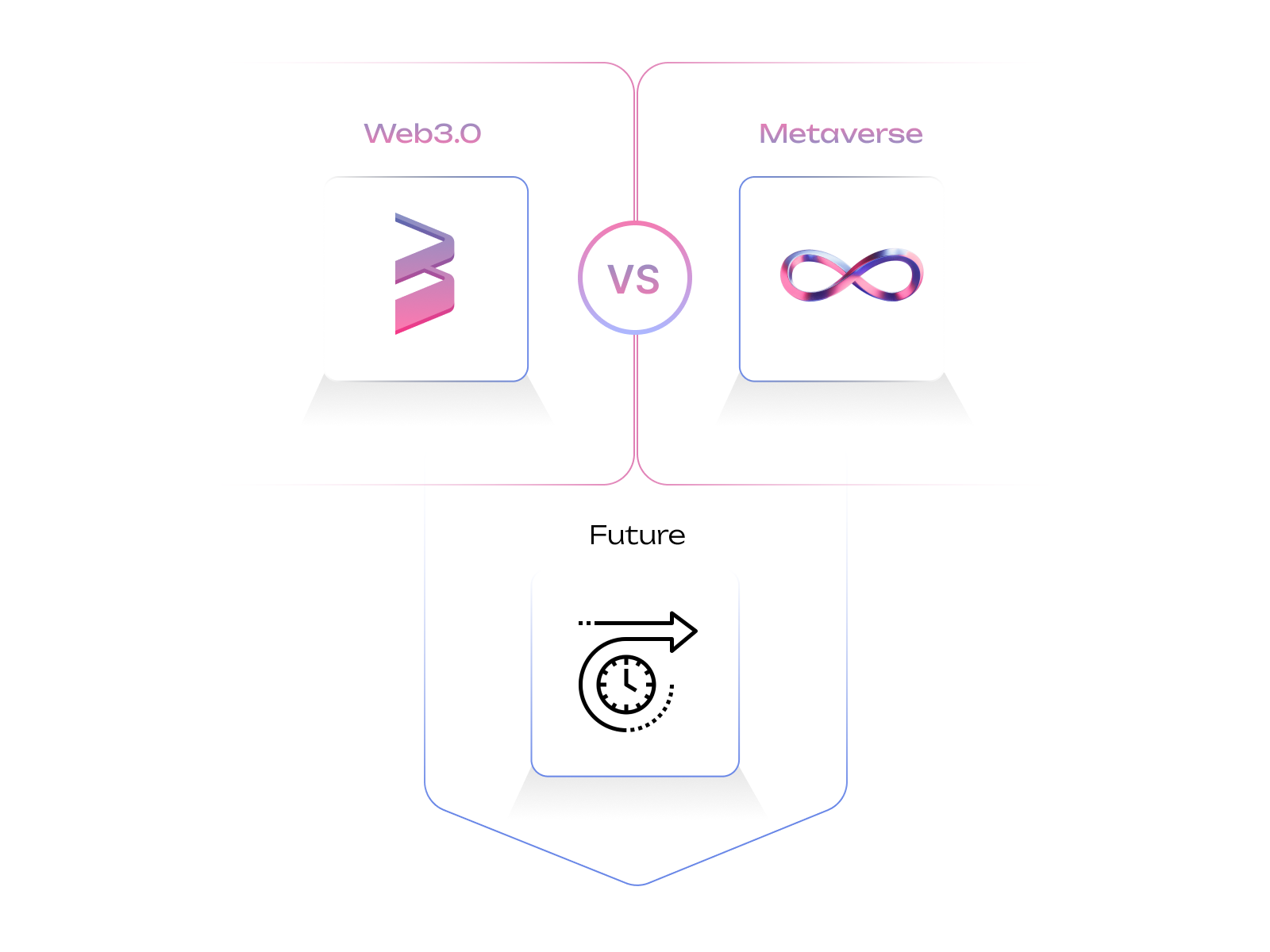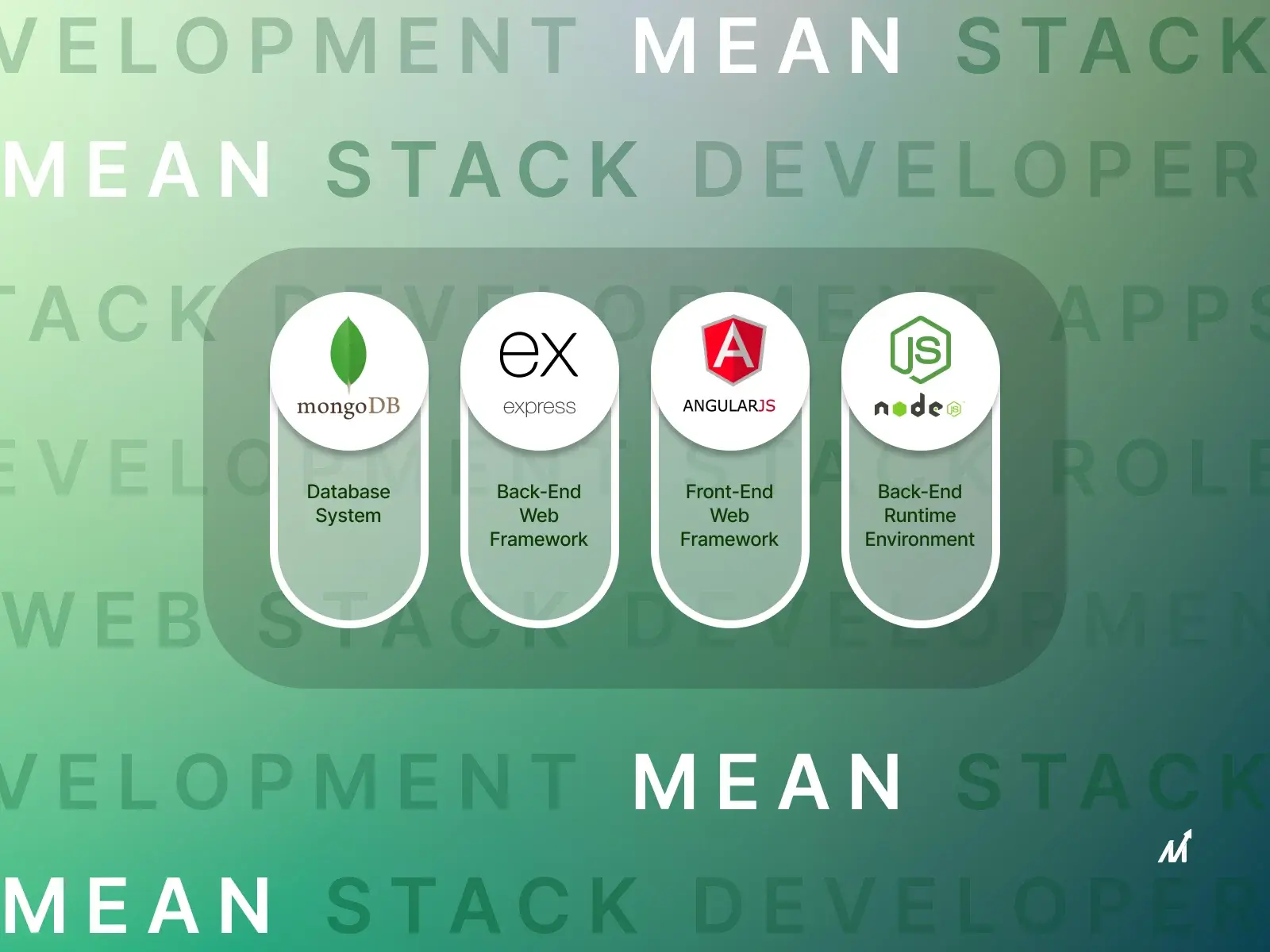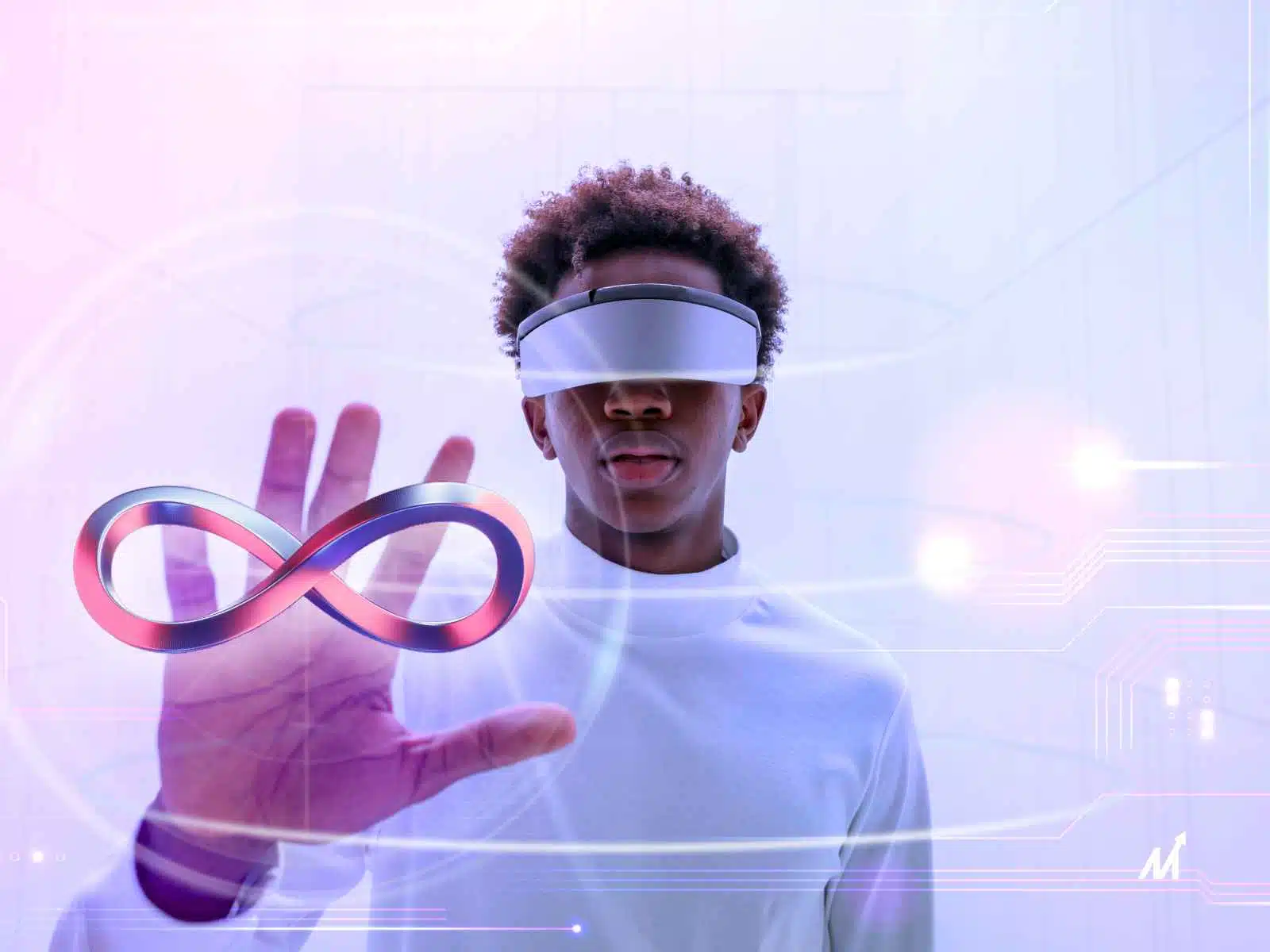Web3 vs Metaverse: Important Facts
The Internet is a dynamic system. As we continue to develop its possibilities, the Internet has grown and expanded like a living thing. The Internet and current technologies are constantly changing, but for users, the growth of new technology delivers a variety of scenarios and proportions. The current digital revolution is hastening the development of a more “decentralized” and immersive Internet. Specialists have developed a wide range of terminology to define critical components of the new digital environment. Web3 vs Metaverse are two of the most popular (and frequently misunderstood) terms. Blockchain technology has created quite a stir with its applications used in cryptocurrency, logistics, NFTs, and government matters. It offers a decentralized approach, increased security, and transparency, making it an in-demand option for the users since there is no monopoly and any particular person or organization does not have complete control.
According to Grand View Research, the market value of the Metaverse will be $678 billion by 2030. The analysis claims that the market worth was shy of $39 billion in 2021, giving it a forecasted compound annual growth rate of almost 39% over a 10-year timeframe. According to McCann Worldgroup, 2 billion people will use the Metaverse daily for at least an hour to work, shop, socialize, or enjoy amusement by 2026. By that time, the overall market value for virtual commodities in the Metaverse might reach $200 billion. In the year 2028, the income from the global Web 3.0 blockchain market is anticipated to amount to USD 23.3 billion.
Despite having many similarities, Web3 and the Metaverse are two different notions. Understanding the distinction between these two fundamental concepts is critical for anyone expecting to embrace a future in the new digital world.
Further Read: NFT Marketplace Development: An All-In-One Guide
Web3: Overview
Web3 is the future. From Web 1.0 and Web 2.0, the version that the world is moving onto next is Web 3.0.
Decentralized protocols, such as blockchain, the technology behind bitcoin transactions, will be employed in the Web 3.0 revolution. It aims to overcome some of the primary drawbacks and flaws of the current Internet era by tackling the crucial concerns of data ownership and control.
A sizable section of the global population today depends mainly on Internet-related services major technological businesses offer. Unlike Google, Apple, and Amazon, these businesses control which services their customers can use and serve as a liaison between customers and their desired outcomes. Web3 doesn’t need authorization because it runs on a decentralized network. In other words, Internet service providers cannot control who utilizes their services. Additionally, they don’t act as a middleman between users and their demands.
In the context of Ethereum, decentralized applications that operate on a blockchain are referred to as Web3. Blockchain technology and cryptocurrencies are employed to further decentralization in this new Internet generation. User access to their data is an aim of the Web 3.0 platform. Individuals won’t have to rely on the major tech companies as a result, and they’ll be able to decide what portions of the Internet they utilize and offer services to one another.
Some examples of Web3 applications are:
-
Apple Siri: Ideal illustration for Web3 ( Web 3.0). The AI assistant’s capabilities increased in the year after the release of Siri in the 4s model. Siri is a sophisticated and personalized platform with speech recognition and AI technology.
-
Google Cloud: The technological behemoth announced plans to upgrade Web3 into a cloud system.
-
Bitcoin: The most prominent cryptocurrency in the world is the ideal illustration of a decentralized transaction.
An Overview Of Metaverse
Metaverse is a Web of 3D virtual worlds that incorporates real-life elements. It is a way of social interaction in contrast to the methods we have available today. It combines AR, VR, video, and blockchain to set up virtual worlds where humans can coexist, be it in the form of avatars, digital figures, etc.
Augmented Reality(AR) uses the real-world environment as a backdrop and incorporates virtual elements, usually utilizing a device such as a mobile. They connect real and virtual backgrounds and incorporate olfactory, visual, and auditory senses.
Virtual Reality(VR) creates a virtual environment, a simulation utterly different from the real world. Video games are an example of such type. It offers a real-world-like experience in a virtual background and makes even the impossible things seem possible.
Leading companies developing the Metaverse:
-
Meta: The Metaverse was initially made famous in most minds by Meta, the new “face” of Facebook. They’ve previously shared information about how they are creating it and how it will change over the next two to five years, but some of their methods and plans are still under wraps.
-
Niantic: The developers of Pokemon Go have prior augmented reality experience. Instead of replacing actual life, they view the Metaverse as a way to improve it.
-
Nvidia: To facilitate the development of the Metaverse, Nvidia and Meta have already worked together to develop the world’s fifth-fastest AI computer. They have released free software to assist world-makers, and they will soon make their engine (called “Omniverse”) available so that users can access the Metaverse.
Web3 vs Metaverse: Differences
1. Web3 vs Metaverse: Methodologies
Web 3.0 focuses more on who will gain data ownership and how information can be transmitted with minimal human interference throughout the network.
Metaverse, on the other hand, provided a unique insight as to how users can interact with the Web. Its main aim is to incorporate various virtual and fundamental elements to develop a conceptualized experience that could not have been possible before.
2. Web3 vs Metaverse: Technologies
Web3’s underlying technologies are as follows:
-
DeFi ( Decentralized finance)
-
Blockchain and cryptocurrencies
-
DAOs ( Decentralized autonomous organizations)
-
NFTs ( Non-fungible tokens)
Metaverse’s underlying technologies are as follows:
-
Connectivity technologies
-
Decentralization technologies
-
Human interface
-
Creator economy
3. Web3 vs Metaverse: Stakeholders
Web 3.0 believes in making the Web a completely independent entity, with the full authority and control lying with the users instead of major players or stakeholders, such as tech giants or large companies.
Whereas, Metaverse has commercial involvement and can be brought or created by individual companies, which will ultimately have a hold on that virtual world and its associated experiences.
4. Web3 vs Metaverse: Purpose
Web 3.0 aims to provide users with a way of interacting with the network in a decentralized, trusted, and permissionless manner.
Metaverse offers a virtual world integrated with 3-D elements to provide innovation in entertainment, virtual experiences, gaming, and health.
5. Web3 vs Metaverse: Use Cases
The next version of the Internet is specified by Web 3.0. It can be compared to a set of guidelines that everyone who uses the Internet must abide by. As a result, Web 3.0 will apply to all of the Web and not just specialized apps.
Television, video games, simulation-based training, education, and social media are integrated into entertainment in the Metaverse. These Metaverse applications are all still being developed, though. It is, therefore, too soon to say whether the Metaverse can accurately mirror almost all real-world activity.
6. Web3 vs Metaverse: The Future
Web3 is an improvement above Web 2.0 and permits online activities.
Metaverse predicts a time in the future when computers will allow people to interact with the digital world.
Today’s Metaverse & Web3 Disruptors
More agile disruptors are raising significant amounts of money to create the next wave of Web3-native Metaverse experiences as established platforms and service providers shift their focus toward the Metaverse. These new enterprises build strong networks of customers and owners motivated by the same goals using Web3 protocols. They are releasing tokens, making money and membership through NFT virtual goods, and developing tokens to create immersive and dynamic virtual worlds that provide entertainment, interests, and equity. Since many are constructed using the Ethereum blockchain, portability and service interoperability are made possible.
Disruptors in the Web3 and Metaverse are frequently decentralized autonomous organizations (DAOs). DAOs use blockchains, tokenized incentives, and automated rulesets (smart contracts) to control how the network behaves and expands. In this approach, blockchain-based organizations—both social networks and computers—can function toward common objectives as semi-automated tribes. However, leadership in DAOs can be shared among participants—specifically, the members with the highest stake in the network’s tokens. This brings up subtleties in the centralization vs. decentralization argument once more. In some networks, the biggest token holders have more power to shape the network’s services, economic models, and overall direction. Growing Web3 businesses are already becoming the dominating marketplaces and gateways.
Web3 vs Metaverse: Similarities
Despite their differences, the two share plenty of similarities, including the following:
-
Both were built utilizing cutting-edge, future-proof technology. The Metaverse and Web 3.0 are connected through the semantic Web.
-
Modern Web technology, including HTTP 2.0, is used by both.
-
Distributed computing is a significant component of the patterns used. Each depends on user acceptance throughout the board.
-
Another critical component of both technologies is AI, which will play a significant role in developing a complicated user interface.
-
Web3 and the Metaverse are inseparably linked. The Metaverse will continue to exist in the surface and deep Web, even though Web3 is still frequently referred to as being decentralized; nonetheless, the Metaverse will remain centralized regarding social media regulating platforms.
-
The two technologies are becoming more compatible because of the technological advances made with blockchain. Every new blockchain concept is evaluated as a possible module utilizing the Web 3.0 engine to power the products and services of the Metaverse.
Web3 vs Metaverse: Markovate’s Take
Web3 and Metaverse are different, yet their applications and future use are connected. Both of them use the concept of blockchain technology and artificial intelligence. It can be said that the Metaverse won’t exist if it weren’t for the Web 3.0 engine. Web3 and Metaverse have immense scope in the future, with continuous advancements and simultaneously working together as they depend upon each other to some extent.
Markovate, a Web3 development company, provides skilled developers to integrate the latest technologies and best engineering methods to give businesses a scalable, reliable, and unique solution. We aim to ensure enterprises can get the maximum potential out of their software. We have a well-designed process with stages from planning to design and maintenance. This helps our team and businesses, as a client, to function smoothly and help bring their vision to reality.
Future is Web3 + Metaverse
The integration of Web3 technologies into the Metaverse ecosystem offers a transformative shift towards user autonomy, asset tokenization, and decentralized governance. Web3’s underlying blockchain architecture provides a secure, transparent ledger for all transactions, ensuring irrefutable ownership of digital assets within the Metaverse. Unlike centralized systems, where data integrity is dependent on a single entity, blockchain’s decentralized nature provides robust safeguards against unauthorized access and data manipulation.
Tokenization of assets, enabled by blockchain, allows for unique identification, ownership, and transferability. This adds not just monetization capabilities but also a layer of economic infrastructure that facilitates trade, investment, and commerce within the Metaverse. Smart contracts further augment these economic activities by offering automated, trustless transactions. These self-executing contracts are programmed to carry out agreed-upon terms, eliminating the need for intermediary oversight and thereby streamlining complex transactions.
In the governance spectrum, Web3’s decentralized consensus algorithms offer a participatory approach to decision-making. This allows for a democratic, transparent governance model where policy and developmental directions can be collectively determined by the community of users, not just a centralized authority.
Additionally, decentralized data storage solutions, such as InterPlanetary File System (IPFS), provide enhanced security and data permanence features. This ensures that user data is not only secure but also resistant to censorship, thereby augmenting user privacy and data sovereignty.
The blend of Web3 and the Metaverse offers a paradigm shift from centralized control to a decentralized, user-centric framework. This amalgamation enriches the Metaverse with an underlying technical infrastructure that fosters authenticity, security, and community-led governance, setting the stage for a sustainable and equitable digital universe.
Web3 vs Metaverse: Commonly Asked Questions
1. Is Web 3.0 the future?
Search engines with AI capabilities are on the horizon and are already having an impact on user behavior. Web 3.0 is the next significant advancement in how we consume and distribute information online. The user’s experience will be customized to their wants and tastes in this new Web age.
2. How will Web3 change the world?
If you have an Internet connection and cryptocurrency wallets like Metamask, you can access the world of Web3. Users would then have complete control over their digital identities and the means and timing of data sharing by utilizing various Web applications.
3. Is Web 3.0 based on blockchain?
Web3 or Web 3.0 is to decentralize the ecosystem altogether. This new technological perspective is committed to using AI, machine learning, as well as cutting-edge innovations like blockchain to address the issues facing the modern Internet and online environment.

